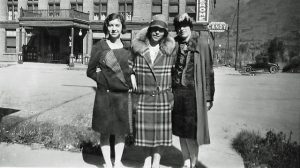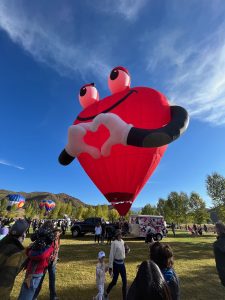Willoughby: 1920s millinery messiah

Willoughby collection/Courtesy photo
The Aspen Times ran fashion columns by Julia Bottomley weekly for nearly four years. My mother was in her late teens and early 20s at the time. I don’t know if she read them, but because of her sewing work at a clothing and hat store and wanting to be fashionable, I imagine she did.
Bottomley was most known for her millinery expertise; in addition to her nationally syndicated columns, she authored books, including, “The Millinery’s Guide” and “A Complete Course in Millinery.”
The first, rather long, sentence of the first 1927 column printed in The Times begins, “If it be your pleasure to be initiated into the secret of ‘what’s new’ in materials for the dainty morning and frock dresses now that spring sewing time is at hand, ‘rayon’ is the magic key, which will open the door of knowledge.” Note this was printed in January, suggesting women like my mother, who did make many of her own clothes, would be starting on spring clothing.
It ended with “Now that sleeve bracelets encircling to the elbow are the later fad, the flowing sleeve should be welcomed, especially when left open at the forearm, for it will charmingly display this item of smart costume jewelry.” With drawings/pictures, her column covered about a third of the large Times page.
Other topics for 1927 included: beach ensembles, parasols, feather skull caps, chic black-and-white effects, cute gingham romper suits, dance frocks, hats to match frocks, trimming for autumn hats, and how to make wool yarn flowers. The last item was for Christmas boutonnieres as presents, with the most glamorous using yarn to make 80 violets.
Hats, her specialty, were more prominent in her 1928 columns. One started with, “Wider brims, wider ribbons — yes there is no doubt about it, milliners are taking a broader view of things than for several seasons past.” A “snug” fit was still important. The hats also came down to below the eyes as you saw the person from the side but tipped back — so from the front, the eyes were seen, and the woman could see straight ahead. The following week, she was reporting on the trend that women may “again enjoy the privilege of wearing hats which are becomingly brimmed.”
The hat trend for 1929, coming from Paris, feathers (flat ones) “positioned with great cunning.” Later in the year, “headgear and frock of the same material is fashion’s latest exploit.” One of the reasons she mentioned it was that this combination might “invite the criticism of looking ‘home made.'” I am sure my mother and her friends who fashioned most of their own clothes would have found that a compliment. A 1930 observation by Bottomley said that hats were being designed and worn, set back on the head, to show more hair: “They are bewitching.”
Kobey’s Hyman Avenue store in Aspen, where my other worked, was the go-to merchant for hats. He tried to emulate Bottomley’s millinery language. One ad in 1928 stated, “Women’s Fall hats, newest millinery for the youthful matron and the sub debs, $2.95 to $4.95 ($42 to $70, respectively, in today’s dollars).”
Tim Willoughby’s family story parallels Aspen’s. He began sharing folklore while teaching at Aspen Country Day School and Colorado Mountain College. Now a tourist in his native town, he views it with historical perspective. Reach him at redmtn2@comcast.net.
Snowmass Balloon Festival still on, despite grounding
Event officials reminded the Snowmass community that this weekend’s balloon festival will carry on despite the lack of air time.









